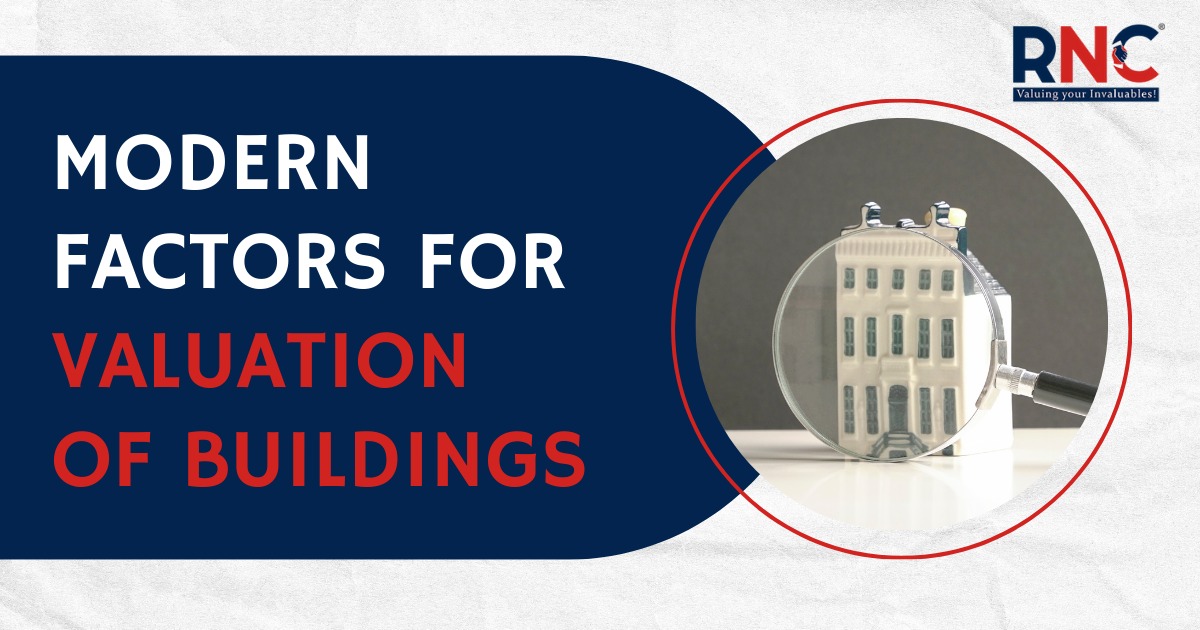
The valuation of buildings is a crucial aspect of real estate, urban planning, and investment. Traditional valuation methods relied heavily on location, size, and construction materials. However, modern valuation considers a range of new factors influenced by technology, sustainability, economic trends, and market demand. This essay explores the contemporary elements affecting building valuation and their significance in today’s dynamic real estate market.
Building valuation in India has expanded beyond just cost and location. Today, green certifications, ESG compliance, smart technology, and RERA impact are critical drivers that influence market perception, financing, and investment potential.
1. Green Buildings & Sustainability (H2)
-
LEED/IGBC certifications now attract 5–10% valuation premium.
-
Energy-efficient HVAC, solar rooftops, and water recycling directly influence resale & rental values.
-
Institutional investors prioritize green-certified assets for long-term ROI.
2. ESG Compliance (H2)
-
ESG (Environmental, Social, Governance) reporting now affects valuation multiples.
-
Buildings with strong ESG performance enjoy better financing terms and lower risk premiums.
-
Non-compliance penalties reduce asset desirability, especially for commercial REIT portfolios.
3. Smart Building Technology (H2)
-
IoT-driven energy management, smart access control, and predictive maintenance reduce OPEX.
-
Tech integration improves tenant demand and valuation uplift (especially Grade-A offices).
4. RERA & Legal Compliance (H2)
-
RERA-mandated transparency (escrow accounts, delivery timelines) reduces risk perception.
-
Projects with strong RERA track records see higher buyer confidence & improved valuations.
1.Technological Integration
a. Smart Building Technology
The incorporation of smart technology in buildings significantly impacts valuation. Features like automated lighting, security systems, energy-efficient heating, and Internet of Things (IoT) connectivity make buildings more attractive to buyers and investors.
b. Digital Twins and AI-driven Valuation
Digital twins—virtual replicas of physical buildings—are used for predictive maintenance and operational efficiency, increasing the value of properties. AI-driven valuation tools also provide more accurate, data-driven property assessments.
2.Sustainability and Green Building Standards
a. Energy Efficiency and Certifications
Buildings with LEED (Leadership in Energy and Environmental Design) or BREEAM (Building Research Establishment Environmental Assessment Method) certifications are valued higher due to their reduced operational costs and environmental benefits. Solar panels, rainwater harvesting, and sustainable materials also contribute to higher valuation.
b. Carbon Footprint and ESG Compliance
Environmental, Social, and Governance (ESG) factors influence investment decisions. Low-carbon buildings attract eco-conscious buyers and companies looking to reduce their environmental impact.
3.Location and Infrastructure Development
a. Connectivity and Transportation
Proximity to public transportation, highways, and airports increases building value. Smart mobility solutions like electric vehicle charging stations further enhance desirability.
b. Urbanization and Smart City Development
With the rise of smart cities, buildings located in tech-driven urban areas see higher valuation due to better infrastructure, security, and digital services.
4.Market and Economic Trends
a. Demand-Supply Dynamics
Property values are influenced by market trends, such as increasing demand for mixed-use developments that combine residential, commercial, and recreational spaces.
b. Inflation and Interest Rates
Economic conditions, inflation rates, and mortgage interest rates play a critical role in determining building valuation, affecting affordability and investment attractiveness.
5.Design and Functionality
a. Flexible and Adaptive Spaces
Post-pandemic trends emphasize buildings with multipurpose spaces, hybrid work environments, and co-living/co-working facilities. Adaptable spaces increase a building’s long-term usability and value.
b. Aesthetic and Architectural Appeal
Modern and innovative designs, along with high-quality interior finishes, contribute to higher valuation, especially in premium real estate markets.
Conclusion
The valuation of buildings has evolved beyond traditional factors to include technology, sustainability, infrastructure, market trends, and functionality. As real estate continues to adapt to modern needs, these factors will play an even greater role in determining the true worth of properties. Investors, developers, and urban planners must consider these aspects to ensure long-term value and competitiveness in the real estate market.
Want to know how modern factors can boost your building’s valuation? Contact RNC Valuecon LLP for expert advisory on ESG, green compliance, and smart asset valuation.
FAQs
1. What are the latest factors in building valuation?
In 2025, building valuation depends on green certifications, ESG compliance, smart building technology, RERA transparency, and sustainable infrastructure—beyond just location and construction quality.
2. How does ESG affect building valuation?
ESG compliance increases a building’s long-term value by lowering risk, improving financing access, and attracting institutional investors. Non-compliance reduces trust and resale potential.
3. Why are green buildings valued higher?
Green buildings save energy and water, reduce OPEX, and meet regulatory norms, leading to better rental yields and resale value.
4. Does smart technology influence valuation?
Yes IoT and AI-driven energy management, predictive maintenance, and smart security increase efficiency and tenant demand, boosting value.
5. How does RERA compliance impact building value?
RERA-compliant projects with transparent disclosures and timely delivery enjoy higher buyer confidence and better financing options, improving valuations.
